Idea by
Yasue Maetake
Call for ideas 2017
Reverse Subterrestrial
Reverse Subterrestrial
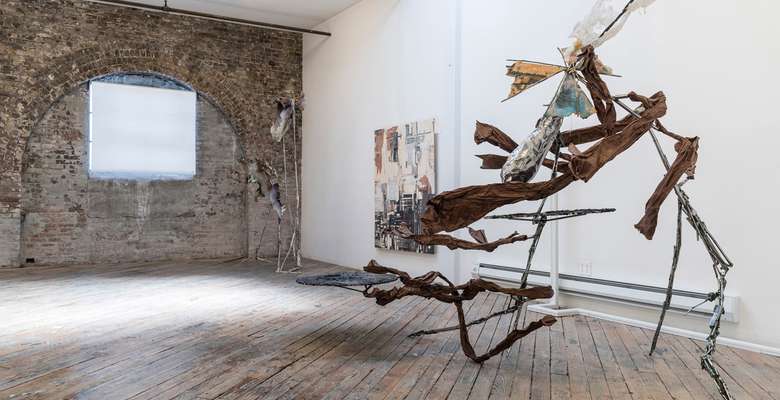
The idea is to mimic a architecture’s underground interior shape and be presented on the outside as a building, which indicates a transferring “interior” to “exterior;” liberating the “subterrane” to “above ground.” This enables us to appreciate an unseen life preserving infrastructure while witnessing this unrecognized shape that offers silent support.
The tracing process is interconnected; if the basement interior shape is rectangular or domelike, the sculpture’s frame structure will conform to being rectangular or domelike.
As I observe an increasingly sedentary culture, I am motivated to express the potential of tranquility when tension is generated as expressive forces collide. As a result, our desire for freedom is released from the limits of physical boundaries, while, paradoxically, the movement is grounded in a gravitational experience.
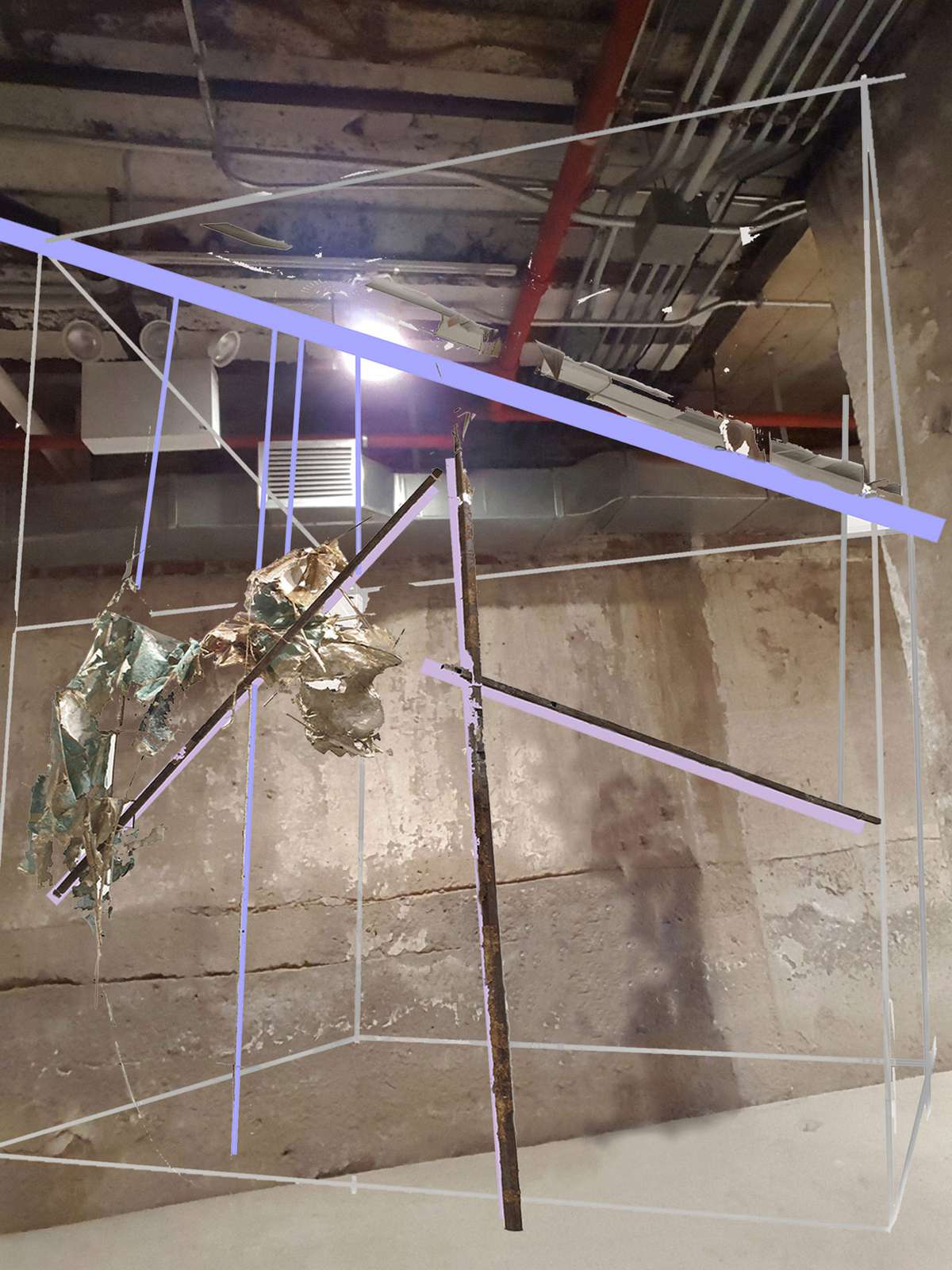
Idea Sketch (for the proposed idea) (2016)
By sourcing from Fallout Shelters, my new project will be to create a freestanding discrete object that will serve as a site-specific piece simultaneously. The installation will embrace viewers fully because the frame structure will be shaped to the form of the architecture’s interior shape by tracing the ceiling to connecting walls as if responding to the room’s interior surface as a “shell”.

Specks of Green Rust Before the Wind II (2016)
H115" x W68" x L73", steel, cane, reed and printed wood stain and copper corrosion on assorted pulps
Exploring the element of monumentality while portraying how decay as an affect heuristic that could occur during a variety of material processes. The cane and steel was manipulated into a skeletal form, and adorned with handmade paper after it has absorbed patinas from corroded copper and steel.
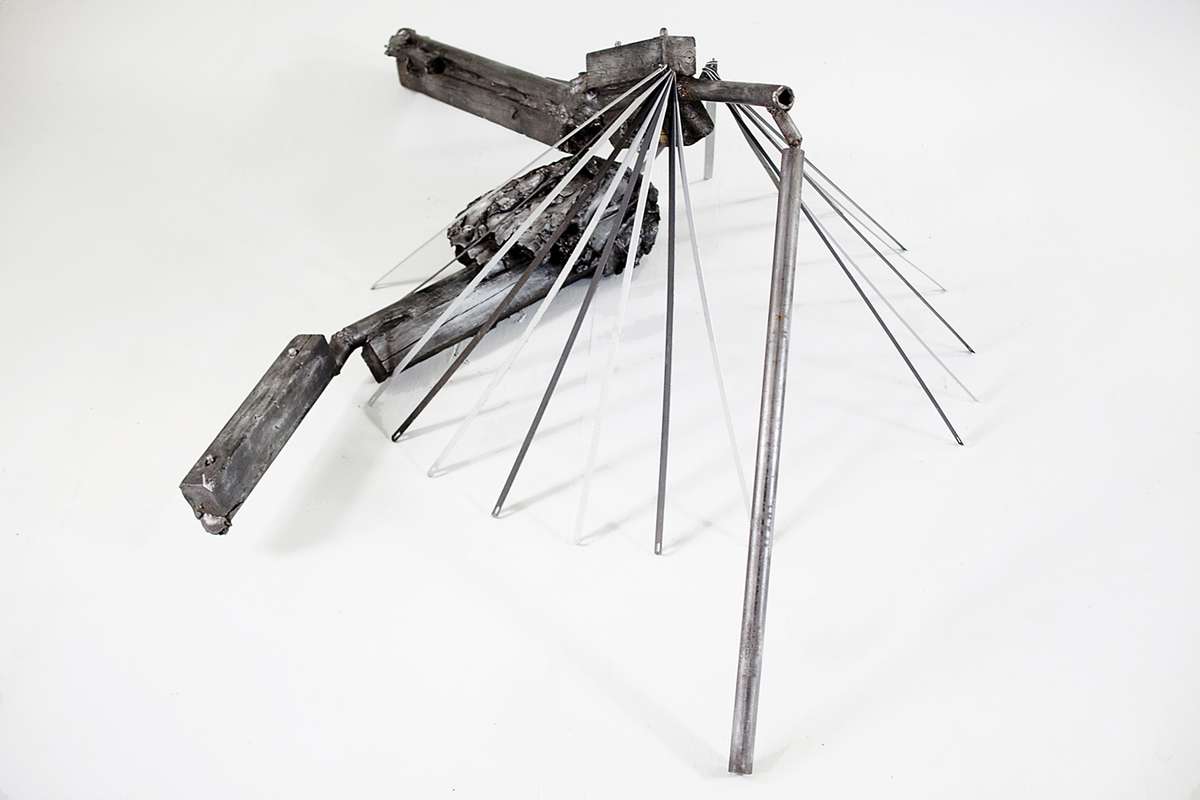
Fanning-Out Graphite (2012-13)
H33" x W115" x L93", Graphite pigment on steel, wood, aluminum, epoxy clay
While the recognizable industrial and natural wastes are deliberately made visible in the finished appearance, the whole body is covered with monochromatic graphite pigment, suggesting the artist’s view of all substances uniformly as raw construction materials.
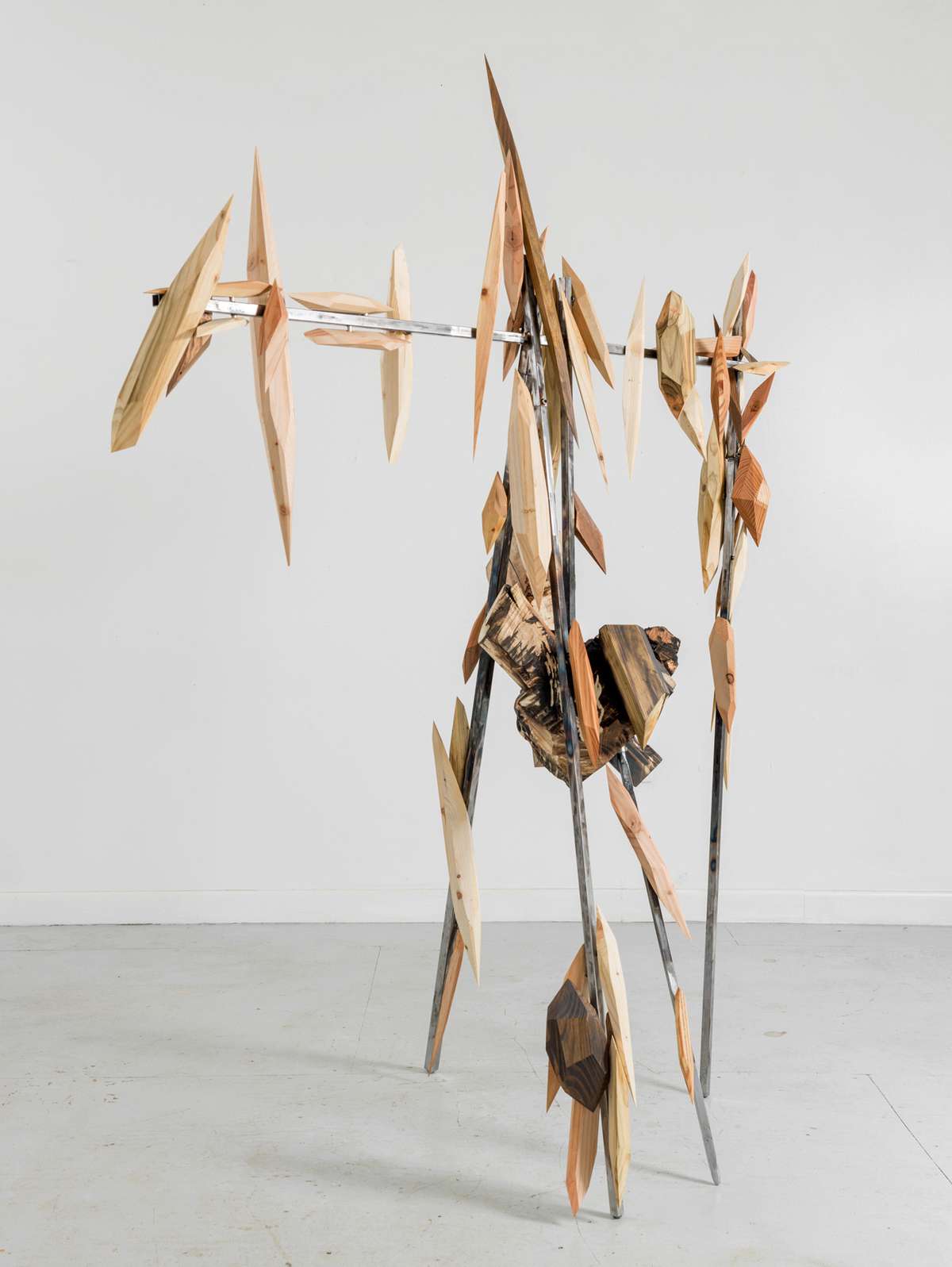
Crystalized Timbers United by Ferrous II (2015)
H81" x W72" x L39", wood, steel
When we make use of the raw materials available around us, we do not change the very nature from which they are spun, it's only their external qualities. The work underscores the artist’s attempt to mastery of nature and its impermanence by manufacturing gems through natural woods.
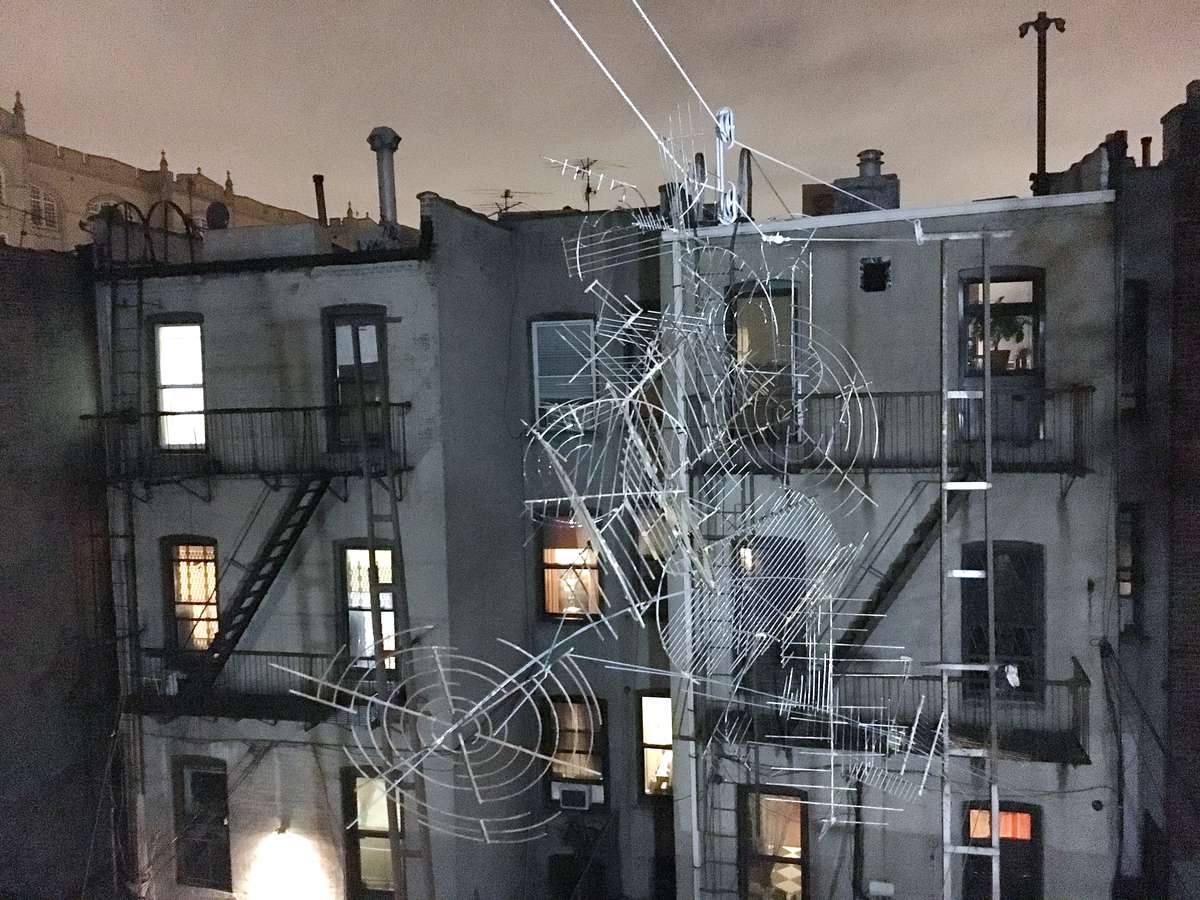
A Fragment of Celestial Debris (2016)
H83"x 114"x 81", welded steel
The work is composed of recognizable salvaged steel, welded together lightly attached to a string. It implies a gentle transferring of cosmic particles in a free, hazy fluidity as the particles descend downward from the heavens to the terrestrial, expressing our desire for freedom is released from the constraints of natural forces, while, paradoxically, safety surrounds the action in a very material gravitational experience.
Reverse Subterrestrial
Reverse Subterrestrial

The idea is to mimic a architecture’s underground interior shape and be presented on the outside as a building, which indicates a transferring “interior” to “exterior;” liberating the “subterrane” to “above ground.” This enables us to appreciate an unseen life preserving infrastructure while witnessing this unrecognized shape that offers silent support.
The tracing process is interconnected; if the basement interior shape is rectangular or domelike, the sculpture’s frame structure will conform to being rectangular or domelike.
As I observe an increasingly sedentary culture, I am motivated to express the potential of tranquility when tension is generated as expressive forces collide. As a result, our desire for freedom is released from the limits of physical boundaries, while, paradoxically, the movement is grounded in a gravitational experience.
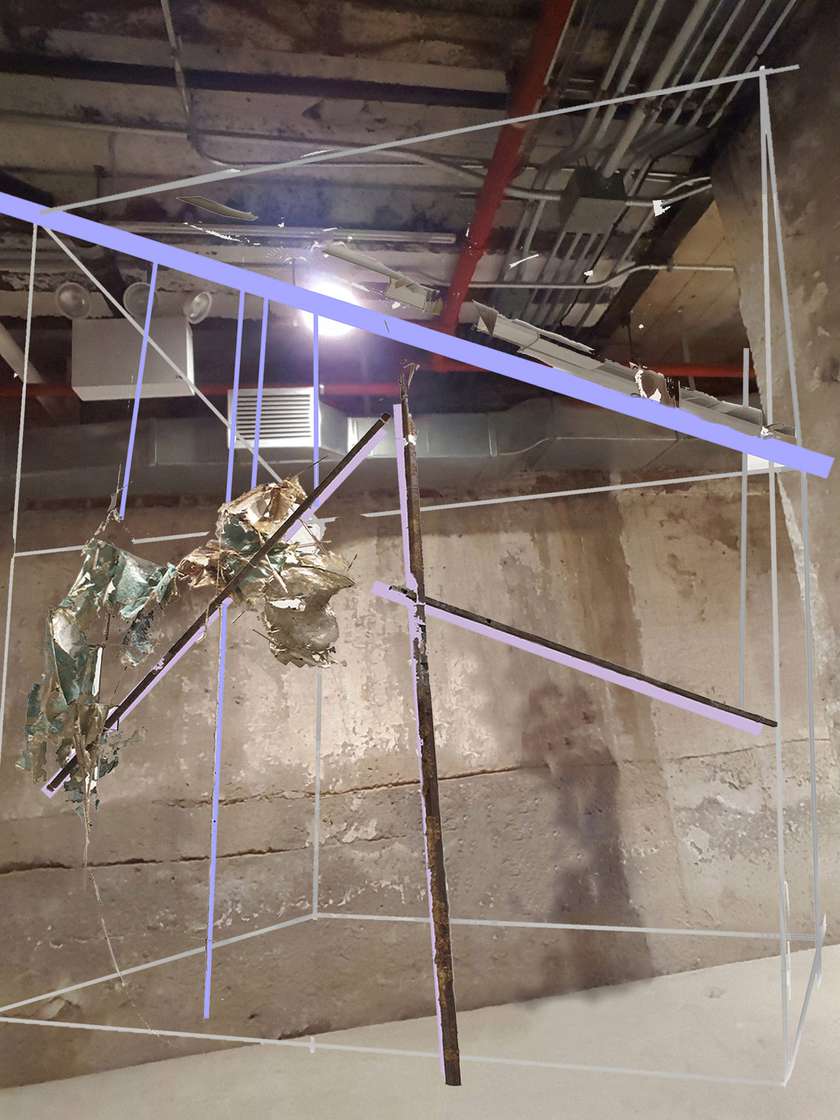
Idea Sketch (for the proposed idea) (2016)
By sourcing from Fallout Shelters, my new project will be to create a freestanding discrete object that will serve as a site-specific piece simultaneously. The installation will embrace viewers fully because the frame structure will be shaped to the form of the architecture’s interior shape by tracing the ceiling to connecting walls as if responding to the room’s interior surface as a “shell”.
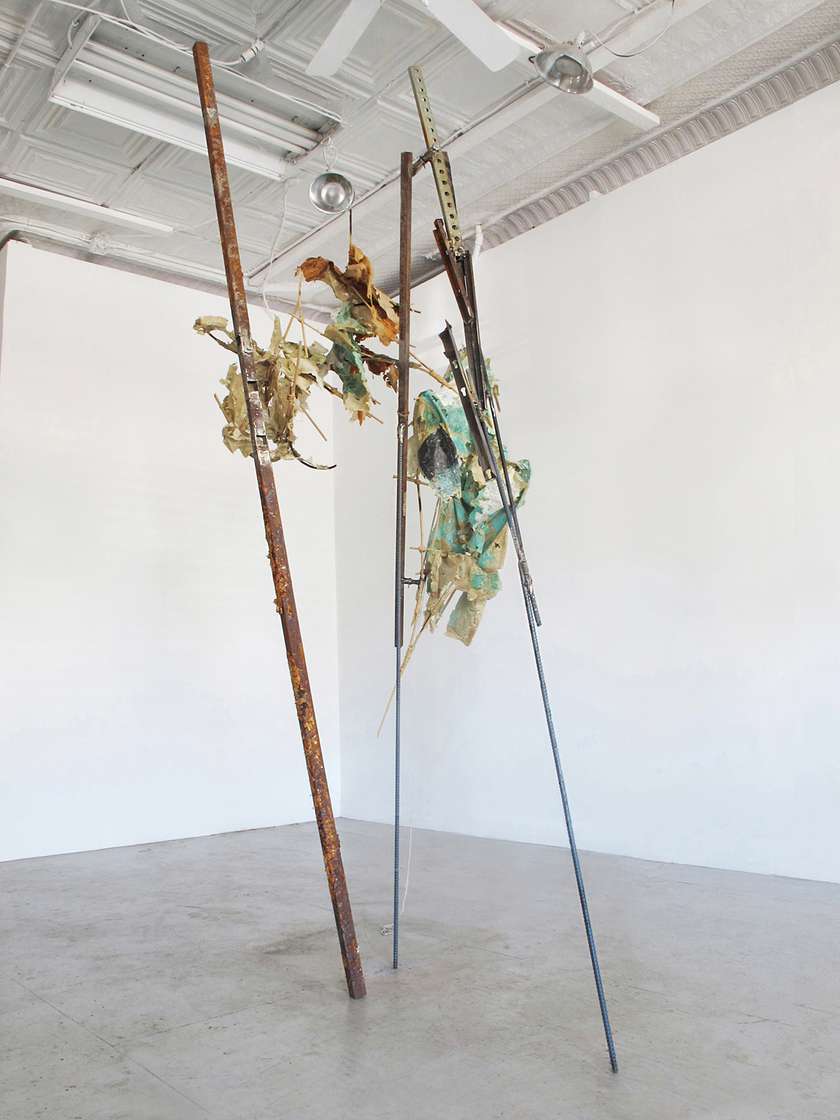
Specks of Green Rust Before the Wind II (2016)
H115" x W68" x L73", steel, cane, reed and printed wood stain and copper corrosion on assorted pulps
Exploring the element of monumentality while portraying how decay as an affect heuristic that could occur during a variety of material processes. The cane and steel was manipulated into a skeletal form, and adorned with handmade paper after it has absorbed patinas from corroded copper and steel.
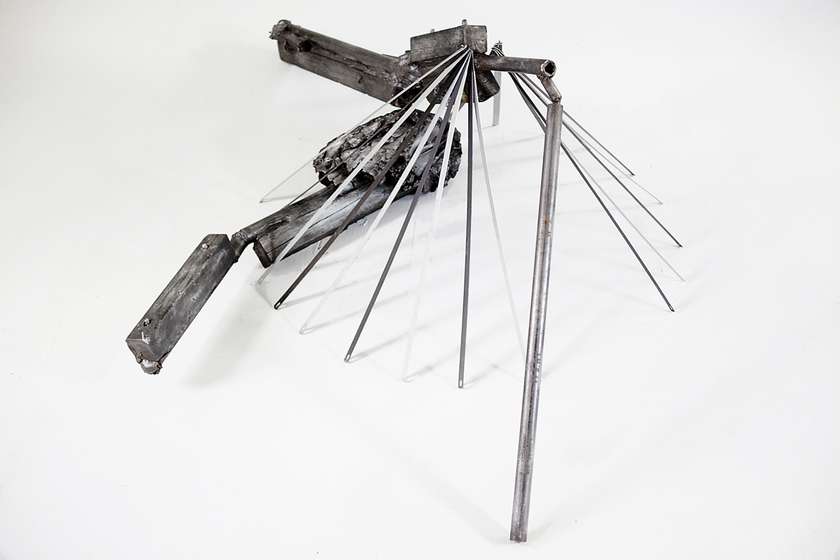
Fanning-Out Graphite (2012-13)
H33" x W115" x L93", Graphite pigment on steel, wood, aluminum, epoxy clay
While the recognizable industrial and natural wastes are deliberately made visible in the finished appearance, the whole body is covered with monochromatic graphite pigment, suggesting the artist’s view of all substances uniformly as raw construction materials.
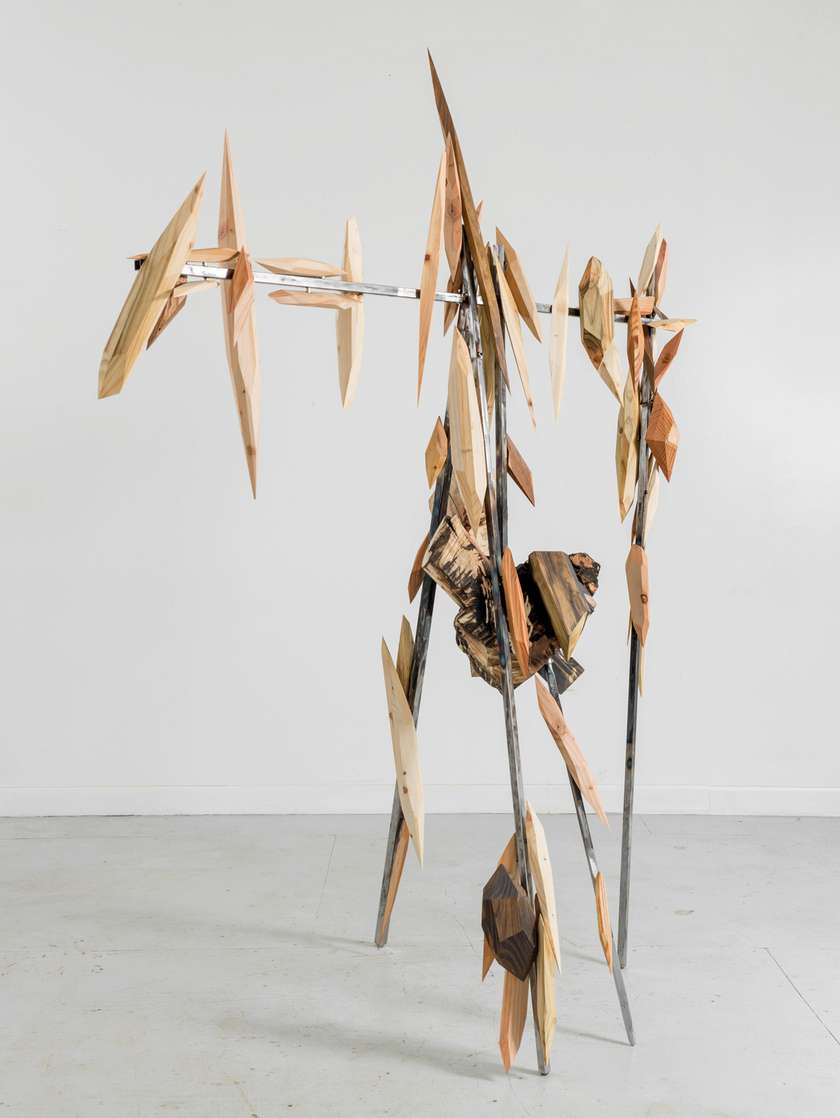
Crystalized Timbers United by Ferrous II (2015)
H81" x W72" x L39", wood, steel
When we make use of the raw materials available around us, we do not change the very nature from which they are spun, it's only their external qualities. The work underscores the artist’s attempt to mastery of nature and its impermanence by manufacturing gems through natural woods.
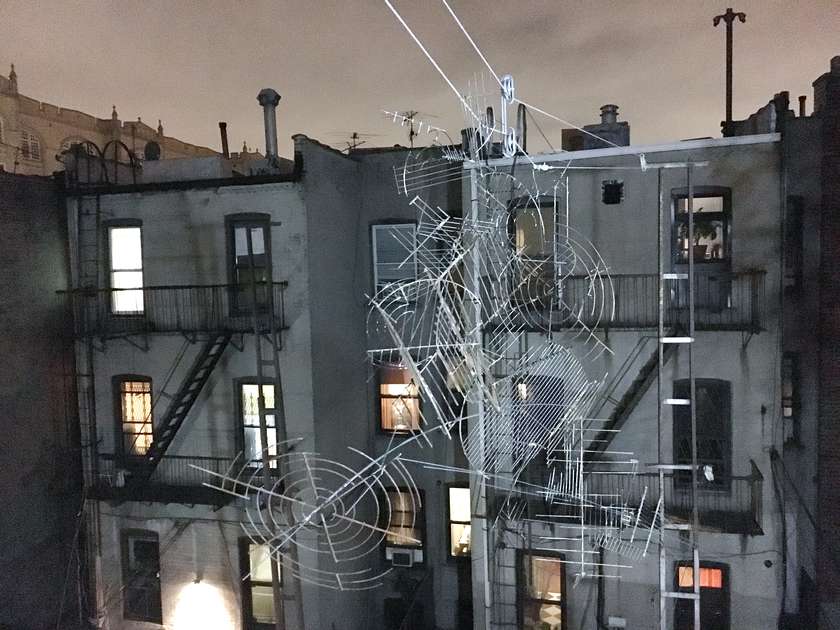
A Fragment of Celestial Debris (2016)
H83"x 114"x 81", welded steel
The work is composed of recognizable salvaged steel, welded together lightly attached to a string. It implies a gentle transferring of cosmic particles in a free, hazy fluidity as the particles descend downward from the heavens to the terrestrial, expressing our desire for freedom is released from the constraints of natural forces, while, paradoxically, safety surrounds the action in a very material gravitational experience.